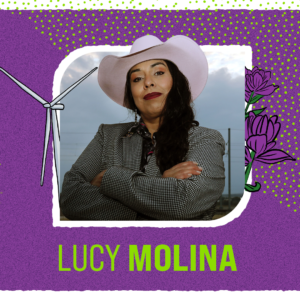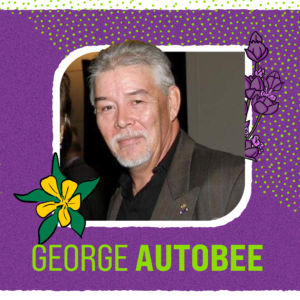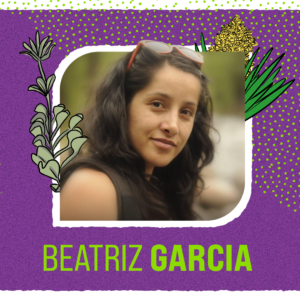“When we advocate for big and bold climate policy, we have to think about the ways that could catalyze a reduction in economic and racial inequity. We have an opportunity to make change for the climate, for the Earth, and for people and economic justice. And this is our moment to make it happen.” – Sophia Mayott-Guerrero
Sophia’s story is part of our blog series in conjunction with the first-ever Colorado Latino Climate Justice Policy Handbook.
Historically, environmental policymakers have failed to fully understand the intersection of conservation policy and the unique issues impacting Latino communities across Colorado. Protégete created the policy handbook as a bilingual tool to help communities advocate for solutions that pave the way towards broader climate resilience. It will also help policymakers to better understand environmental inequities that Latino communities in Colorado are facing. It illustrates the historical context of environmental racism on Latino communities, provides innovative data, and presents a range of solutions to solve the most pressing environmental issues Latinos in Colorado are currently facing. This blog series delves deeper into the stories of community leaders who are experiencing and addressing many of the issues that the policy handbook details.
Read the rest of the stories!
As a former Protégete organizer and Conservation Colorado’s first Communities & Justice Advocate, Sophia Mayott-Guerrero helped engage Latiné communities in Jefferson County on environmental issues and pass groundbreaking policies that have protected our health. Now, she is Senior Organizer at the ACLU of Colorado and also serves on the Lakewood City Council.
In this edited version of an interview Conservation Colorado and Protégete conducted with Sophia, she shares how growing up in the San Luis Valley shaped her perspective on the environment, how she became an advocate and activist, and why the climate movement needs to prioritize justice.
“Concern for the environment is not new, it’s old.”
I lovingly call the town I’m from, Alamosa, the “bustling metropolitan area” of the San Luis Valley. Alamosa’s population is 7,000 and it’s the only town with a Walmart for 120 miles. The whole San Luis Valley is geographically almost twice the size of Connecticut, but with only 46,000 people, it is very sparsely populated. A significant percentage of the population is Hispanic or Latino.
The San Luis Valley has always been an outlier. When I was growing up there, the high school dropout rate was really high. And while its economy is doing better now, the poverty rate in the San Luis Valley is still much above the Colorado average.
The San Luis Valley also has excellent art and great food and amazing community. Everybody—even people who aren’t particularly politically inclined or people who are politically conservative—talks about how the fire season is getting longer, how the drought is impacting our water supply, how hot the summers are becoming, how severe the winter storms can be, and so on. When the mountains around us are on fire or when buried deep in snow, trucks can’t bring supplies, and those Walmart shelves empty out. The thing about being that isolated is that changes in the environment can prevent access to basic resources.
The valley also has more of a culture of political action than other places. I was surprised when I moved away, first to go to school in Fort Collins and then to live in the Denver metro area, that most people aren’t very politically engaged.
The San Luis Valley is more democratic than you would expect. And that’s not because it’s some hotbed for woke young leftists. It’s because people who have been farming here, sometimes for over eight generations back, have the generational knowledge to see how drastically our climate is changing, and that things have to change for them to survive. They are afraid of running out of water, and they believe in climate change. And they’re thinking about how to conserve our resources in ways that allow us to continue this lifestyle. In the San Luis Valley, concern for the environment is not new, it’s old.
“There were three days where the whole town smelled like a pool.”
Another reason people pay attention to pollutants and environmental degradation is because they cannot rely on the government or other systems in place to protect them. When I was growing up, the water in Alamosa had far over the federally recommended amount of arsenic. It took over a decade before the city built a reverse-osmosis system to filter it out. Exposure to arsenic like that over time is really strongly correlated with increasing the risk of skin cancers, adverse birth outcomes, heart disease and other health impacts. And, unsurprisingly, I hear about people in the area having these health problems all the time.
In 2008 somehow the aquifer in Alamosa was poisoned with salmonella and it caused a huge outbreak. Over 400 people got sick, and one person died. The National Guard had to come in and bring us water. For weeks, each person was allowed to have one gallon of water per day. The university and all the schools shut down.
The way to fix the salmonella problem was to flush the system with chlorine, which meant the water would give you a chemical burn if you touched it. There were three days when we were all supposed to just turn our taps on all day, and for those three days, the whole town smelled like a pool. It was so weird.
And now that I think back on it, I think about the impacts on locally owned restaurants, on people whose workplaces couldn’t just shut down. People lost weeks of wages. The salmonella outbreak happened right around the 2008 recession, so it made it that much harder for the economy in Alamosa to recover.
“The laws are specifically ignored for places like the San Luis Valley.”
Another environmental justice story that’s revealing was the fight over radioactive uranium waste. Right outside of town, near the Conejos River that irrigates the farmland outside of Antonito, the U.S. Department of Energy was transferring radioactive waste from the Los Alamos National Laboratory in New Mexico from trucks to trains. The thing about a pile of uranium tailings is that it looks like dirt. So there would be all these truck beds parked in the open air only hundreds of feet away from the primary agricultural water source with no cover on them. The wind would pick up this radioactive “dirt” and settle it back into the water. It seemed normal at the time—everyone just thought of it as giant piles of dirt. And I think that’s what the government thought too: that because we are poor, Hispanic and Latino, we are brown, we have low graduation rates, that we won’t notice that they’re actively poisoning us and that it’s illegal. So nobody expected anybody to start organizing against it.
But people did, and petitions were elevated to the state and then the federal government. When it was investigated, it turned out that these companies were not following the law—the piles of uranium tailings were supposed to be covered.
I definitely saw growing up that it’s not just that the laws aren’t designed to protect places like the San Luis Valley, but they’re also really specifically ignored for places like the San Luis Valley. I also got to see how when communities pay attention, that can quickly change.
“The environment is here, too!”
I was raised on this ideal that if we organize and participate in our democracy we can change our situation. When I graduated from college I worked in the arts. But then to make ends meet, I did some political canvassing knocking on doors, and I discovered I really liked it. When I found a position at Protégete, it seemed so obvious that it was the perfect fit, to work on climate change and the environment in the Latiné community in the Front Range. In Colorado at the time, that felt new.
The Chicano population of the San Luis Valley is not the same as the Latiné and immigrant populations in the Denver metro area. Jefferson County, where I was organizing, was challenging because a high percentage of the population is Latino, but there aren’t as many cultural hubs and enclaves as there are in Denver or Aurora or Pueblo. We’re out here, but we’re not all talking to each other. So it was really difficult to find that community.
And one of the things that was even more striking was the way that people thought about the environment as something outside of themselves, something over there up in the mountains. I was like, no, the environment is here, too!
Part of getting people to see that was expanding the issues we see as environmental issues. One of the first projects I worked on as a Protégete organizer was a Justice for Janitors campaign. The National Renewable Energy Laboratory (NREL) was having a contract dispute with janitors who were fighting for better wages, health care, and working conditions—including the ability to use natural cleaners instead of chemicals that might not be safe. We made the argument that the sustainable energy we make at NREL needs to include sustainable jobs for everybody.
As I moved more into the policy space, I’ve gotten a better sense of the common threads in how Latiné communities are treated statewide. For example, Suncor is currently being investigated by the EPA because they’ve blown past their state level permits for years. Just like in the San Luis Valley, the laws existed, but they were being ignored because the community it’s in was considered disposable, and not expected to fight back.
“The rising tide doesn’t lift all boats equally.”
I think there’s this pervasive idea among environmentalists that all good climate and environmental policy helps everyone equally. It’s this idea that we’re all in the same boat, that we’re all equally threatened by climate change, so all we need to do is reduce greenhouse gas emissions and we’ll all reap the benefits.
But in reality, some boats are tied to a shorter rope on the dock. These are the communities like the San Luis Valley and Commerce City, that are predominantly people of color, and already hit harder by pollution and contamination with less access to resources. So unless we do anything about that rope, as the water rises above them they’ll drown anyway. That rising tide doesn’t lift all boats equally, and some of it is straight up harmful.
If all we do is keep things like they are but without the carbon pollution, we’re still going to see the polluting factories, the air toxics, and water contamination in communities of color. And we’re still going to see the bulk of the benefits, like cheaper energy and better jobs, in white communities. That’s really unacceptable.
Housing is one example where I see this play out. We’re working on creating more climate-friendly and energy-efficient housing, and that comes with a cost burden. But the answer to that problem too often is to just exclude affordable housing from these requirements. That perpetuates the gaps—people who are already struggling to pay rent will be left with higher energy bills and dirty appliances; they’ll be more at risk of suffering through increasing heat waves without air conditioning or proper insulation. Instead, we could subsidize these upgrades in affordable housing. We could leverage our action on climate change to actually reduce those gaps and tackle the housing crisis.
If we continue to think all climate policy is created equally and all climate policy will create equality, we’re still going to end up with brown people working in and living near polluting factories, with health disparities, with sacrifice zones. And we won’t fix the core of the problem. So we should advocate for big and bold climate policy, but we have to think about the ways that could catalyze a reduction in economic and racial inequity. We have an opportunity to make change for the climate, for the Earth, and for people and economic justice. And this is our moment to make it happen.










